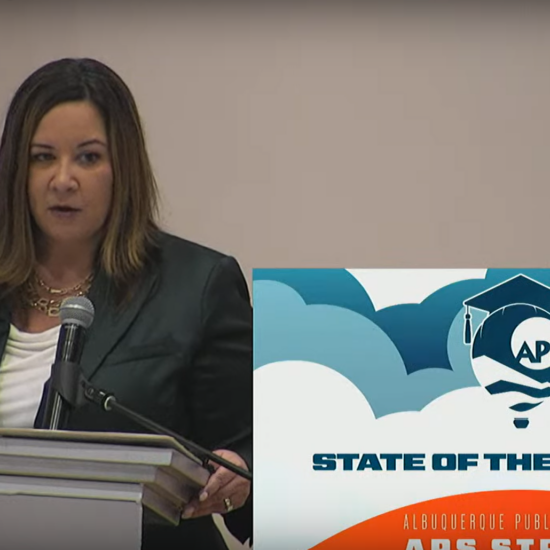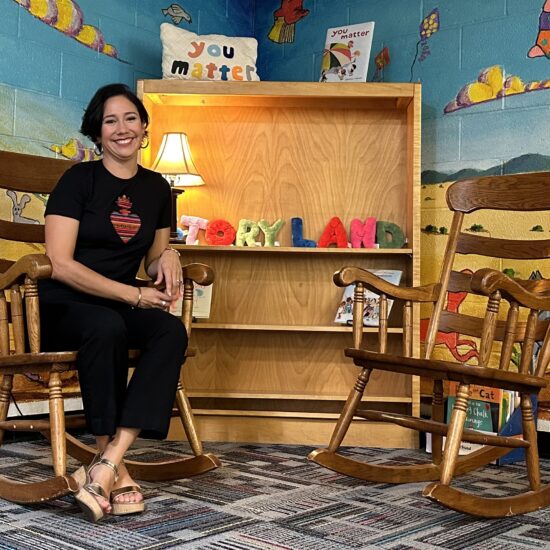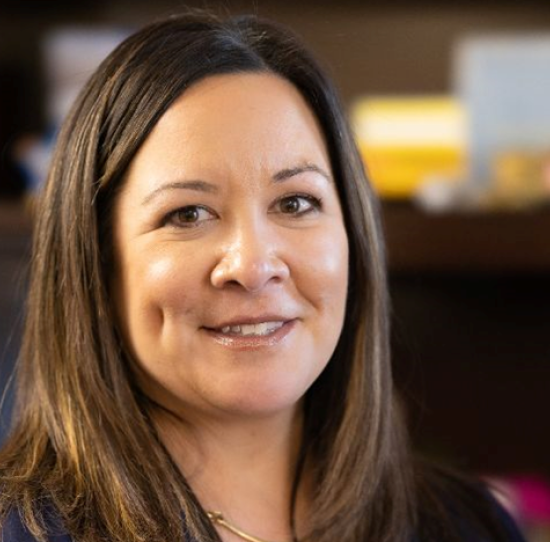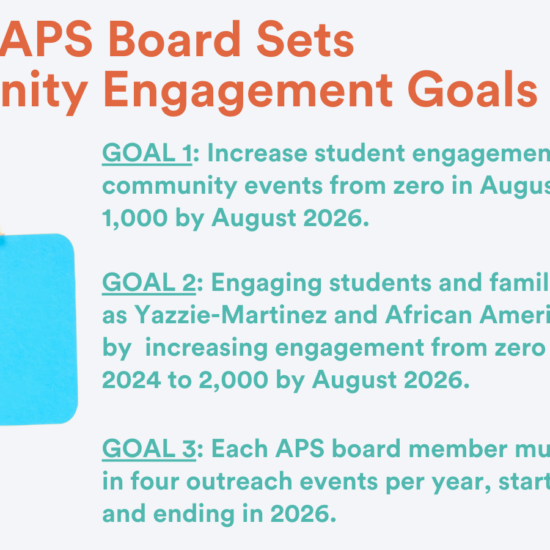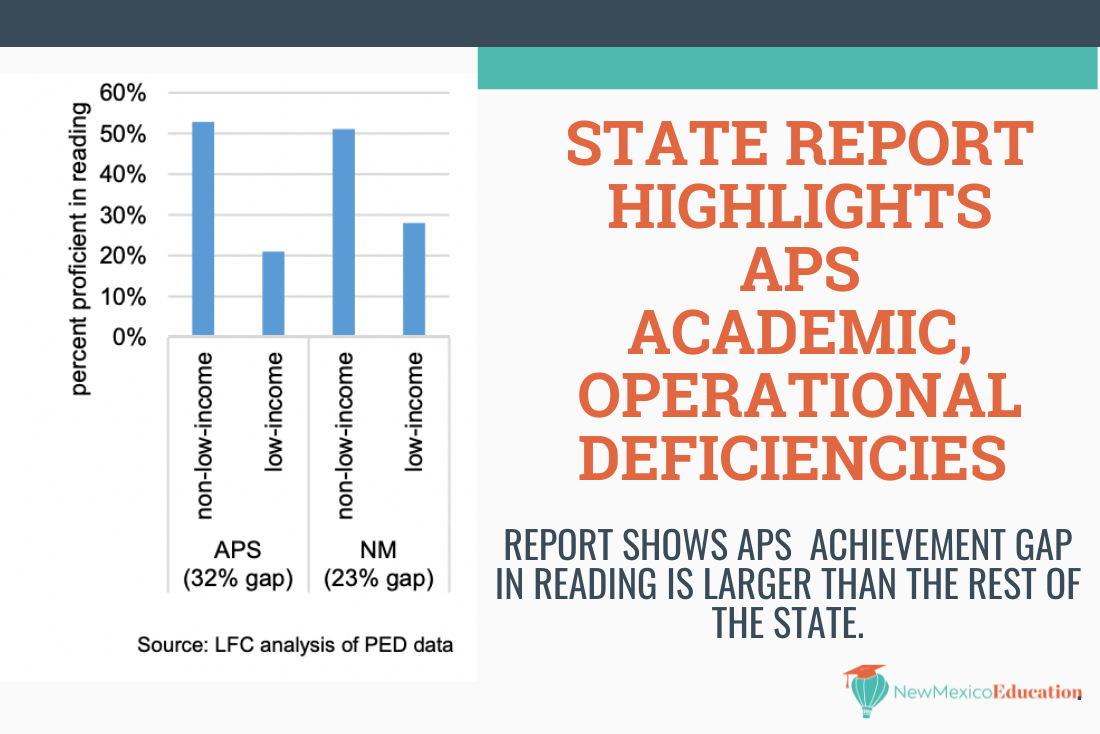
Albuquerque Public Schools is hampered by multiple operational challenges that play a role in the district’s persistent and worsening academic struggles.
That’s a key takeaway from a comprehensive, 34-page report on APS presented by the evaluation staff of the New Mexico Legislative Finance Committee to committee members Wednesday.
APS’ most recent struggles are occurring in the context of a pandemic, which has accelerated student achievement declines. But at the same time, the report points out, APS, like districts across New Mexico, are flush with one-time federal relief funding as well as new state spending.
“This is a time of really unprecedented resources,” LFC Program Evaluation Team member Catherine Dry told the committee. “The legislature’s response to the (Yazzie-Martinez) lawsuit has been to continue to pour resources into state public education. And as a result of COVID there are even more resources available. But at the same time, student enrollment is declining. (There is) more funding and fewer students.”
Individual APS schools where students are struggling could use federal relief funds to provide extra and longer school days to help counteract learning loss and close achievement gaps, the report suggests.
The report also points out that, despite a 17 percent drop in enrollment over the past decade, APS has reduced its workforce by just 3 percent, exacerbating inefficiencies in a district simultaneously struggling to educate its students effectively and equitably.
The report paints a relatively bleak picture of the state of APS, academically and operationally. Achievement gaps between the district’s 51,000 low-income and more affluent students are wider than in the state as a whole. In 2019, the last year state standardized tests were administered, there was a 32 percentage-point gap in reading proficiency between low-income and non-low-income APS students. Just 20 percent of low-income students scored proficient or better in reading.
More recent district testing suggests these gaps have grown wider since the pandemic disrupted in-person schooling with proficiency rate growth slowing for all students, but significantly more for low-income students.
While graduation rates improved from 72 to 80 percent between 2020 and 2021, “without assessment data for (those years) the proficiency of graduates is unknown,” the report says.
In other words, it is impossible to determine whether those additional graduates are college or career ready, or if they’ve simply been pushed through the system.
APS Superintendent Scott Elder acknowledged the report’s findings, but pointed out some silver linings to committee members, including the increased graduation rate and the finding that “elementary students do show a year’s worth of growth.” He also said that even amid a pandemic, more than 11,000 high school students took Advanced Placement classes.
Elder said the apparent over-staffing of the district is largely due to pandemic disruptions. APS had plans in place to “right-size” the district he said, but chose to hold back as students were returning after being out of school for more than a year.
“We chose not to do that at the time because of the incredible disruption that would cause both in our schools and our community and the possibility of putting hundreds of people out of work at a time when that would have been extremely negative for the local community,” Elder told the committee.
Elder acknowledged the district’s academic challenges. He said a key problem educators face is what he termed “first teach,” meaning that when teachers introduce new concepts to students, the material isn’t being absorbed. He said the district is “investing in professional development” to address this problem.
But the report cites professional development as one area the district needs to improve.
“Funds could be better deployed to improve teaching practice, including providing sustained training on using student data to adjust instruction and better serving children with disabilities,” the report says. “APS teachers and administrators cite lack of analysis of student data as the most common reason for not being able to improve outcomes, but the district names data-driven decision-making as a core component of its framework to support student learning.”
In fact, the report adds, APS budgeted $6.8 million in fiscal year 2021 for instructional professional development, but spent just one-third – $2.1 million – of the budgeted amount.
State Senator Steven Neville, an Aztec Republican, pointed out that APS achievement gaps are larger than gaps in the rest of New Mexico. This is both because non-low-income APS students perform better than the state as a whole, and because low-income APS students perform worse.
The APS reading proficiency gap is 32 percentage points, while for the rest of the state’s school district’s it’s 23 percent.
The LFC report highlighted several other challenges facing APS. Among them:
- A lack of “effective practices” to help catch up students who have fallen behind academically. The report suggests that APS should more broadly expand the school year and lengthen the school day. But the APS board recently voted down a proposal to do just that.
- APS consistently overestimates its spending in certain categories, and then claims budget deficits. “The district has overestimated spending on general supplies and materials by an average of $30 million. This contributes to budgeted spending exceeding budgeted revenues and the appearance of a deficit each year,” the report says.
- The district spends inefficiently, as evidenced by under-enrolled elementary school grades and classes. “Most elementary kindergarten classes, first- third grades, and fourth-sixth grades are enrolled below capacity (between 60 and 74 percent),” the report says. This leads to staffing surpluses.
- APS has failed to complete a “budget and sustainability plan” that would prepare it for continued declining enrollment.
APS could take several steps to improve its outcomes and operations, the report concludes. It stresses the importance of having more schools participate in extended learning time programs, especially schools performing below the district average.
The district should also offer higher pay or bonuses to special education teachers or other “hard to staff positions in high needs schools,” the report says.
The report also urges APS to spend its budgeted professional development funds on training that is sustained, collaborative, and “uses data to guide instruction.”



